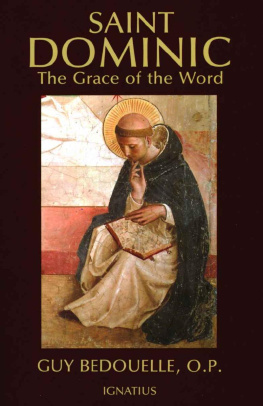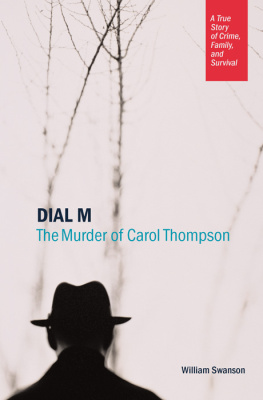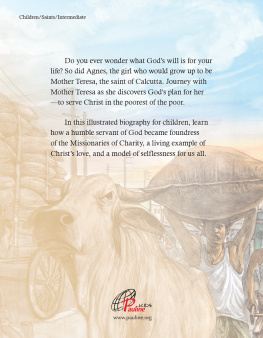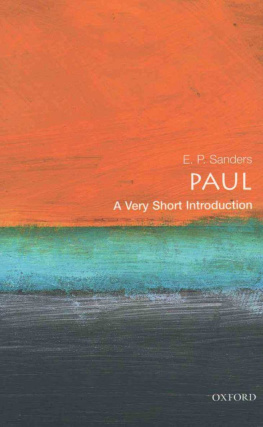Title page
Columbanus
Poet, Preacher, Statesman, Saint
Carol Richards
imprint-academic.com
Publisher information
2015 digital version by Andrews UK Limited
www.andrewsuk.com
Copyright Carol Richards, 2010, 2015
The moral rights of the author have been asserted.
No part of this publication may be reproduced in any form without permission, except for the quotation of brief passages in criticism and discussion.
Originally published in the UK by
Imprint Academic, PO Box 200, Exeter EX5 5YX, UK
Originally published in the USA by
Imprint Academic, Philosophy Documentation Center
PO Box 7147, Charlottesville, VA 22906-7147, USA
Passages from Cardinal Tmas OFiaich, Columbanus in his Own Words , Veritas Publications, Dublin, 1974/1990; used with permission .
Copyright material from The History of the Franks by Gregory of Tours, translated with and Introduction by Lewis Thorpe, Penguin Classics, 1974; used with permission.
Quotations from Ecclesiastical History of the English People , edited by Judith McClure & Roger Collins, OUP, 1999; by permission of Oxford University Press.
Quotations from Lost Scriptures , by Bart D. Ehrman, OUP, 2003; by permission of Oxford University Press, Inc.
A Prayer from St Columbanus
Grant, O Lord, that the light of your love
may never be dimmed within us.
Let it shine forth from our warmed hearts to comfort others
in times of peace and in seasons of adversity
and in bright beams of your goodness and love
may we come at last to the vision of your glory
through Christ our Lord. Amen.
1 Columbanus: Father of the European Union
... to live without offence, each retaining what he has received and remaining wherein he has been called.
Columbanus, Letter to the newly elected Pope (604 or 607 AD)
In seeking to explain the concept of modern European unity one of its founding fathers, Monsieur Robert Schuman, described a sixth century wandering Irish monk as the patron saint of those who seek to construct a united Europe (Lehane, 2005).
He was speaking of the saint known as Columbanus - although he referred to himself as Columba - which in Latin means The Dove - the Latin suffix was added later to distinguish him from his older contemporary Columba of Iona, whom for the sake of convenience we will hereafter refer to by his other name Columcille (The Dove of the Church).
The addition of the suffix to the name of Columba the Younger as he is also sometimes known indicates that a century after their deaths their lives had already become somewhat confused. It is instructive that both men chose the same monastic name because the chances are they left Ireland under very similar circumstances to redeem themselves in missionary activities.
However, what we do know for certain is, that Columcille searched for his redemption in the western isles of Scotland and that significantly he did not go very far from Ireland or exile himself for life. Columbanus, on the other hand, went into permanent exile in peregrinatione . In the context of the life of a saint this is usually translated as on pilgrimage but peregrinaggio -the Italian form of the word - is also translated as travels and adventures a description that might be better applied to the story of Columbanus life, although the spiritual element was never far from the surface , and one which might be of more use to us when examining the motives behind his mission.
His travels and adventures, in the course of a long life, took him from Brittany in the west right up the Rhine valley across the Swiss Alps into Lombardy - what is now northern Italy - finally coming to rest at Bobbio where, after creating his last foundation, he died at the age of seventy, for the time a very old man.
He was therefore the epitome of the wandering monks who carried across Europe their brand of Celtic Christianity which, even more interestingly, came back by more or less the same route many centuries later in the form of the Protestant Reformation.
For us, Columbanus holds the secret to the intellectual and spiritual schism that lies at the heart of the Europe M. Schuman was so keen to unite. For many centuries attempts have been made to create a united Europe. Many times the attempt, however successful for a period, has ultimately failed. Its success or failure, even in the twenty-first century, may equally be laid at the door of this temperamentally volatile itinerant Irishman - typically Irish - a handsome man with a poetic temperament, volcanic temper and a mind rigorous in pursuit of intellectual satisfaction .
Columbanus, as father of the Protestant Reformation, may be said to have destroyed the European unity of the Middle Ages. Its ironic that he is now said to be the inspiration for its unity in its modern form. However, in a sense both claims are perfectly justified as he continues to be revered as a saint by both Protestants and Catholics in roughly equal measures and I will try and unravel this paradox by telling his extraordinary and fascinating story.
This is what the holy fathers, namely Polycarp and Pope Anicetus taught - to live without offence to the faith, nay persevering in perfect charity - each retaining what he has received and remaining wherein he has been called (OFiaich, 1990, p. 77). Cf. St Paul: Let every man abide in the same calling wherein he was called ( 1 Corinthians 7.20).
To further confuse matters another Columba the Younger was also among the group that accompanied Columbanus.
Cf the 1557 Venetian book Peregrinaggio di tre giovani figlivoli del Re di Serendippo by Christofero Armeno translated as The Travels and Adventures of Three Princes of Serendip (Merton & Barber, Princeton, 2004).
Robert Schuman (18861963), a French statesman and a driving force behind the European Coal and Steel Community that developed into the European Union.
10 Backwoodsmen
May you have food and raiment and a soft pillow for your head, and may you be half an hour in heaven before the Devil knows youre there (Irish blessing).
The Celts lived life quite literally in the round. For them life was a circle, or more accurately, a series of interconnecting circles - a spiral with no known beginning and no visible end.
It is only recently that we have rediscovered the importance of the spiral in our search for the secret of life. The discovery that the conduit of our genetic coding is shaped like a double helix has once again transformed our world view. From the strictly rectilinear geometry of modernism artists and architects are being drawn again to celebrate organic curves and natural forms.
The Celts - indeed all the people of northern Europe down to the early mediaeval period - knew instinctively that the spiral was the key to human existence. The British and Irish, remember, never did believe that the sun revolved around the earth. They always knew it was the other way round and the earth revolves around the sun not in a perfect circle but in an ellipse. (See further the Additional Note at the end of this chapter, p. 123.)
The Druids were passionate in their belief that the human and natural world interconnected. The idea of shape- shifting was not so much a belief in a physical reality - no person has ever been known to actually change species - but a desire to see the human and animal world as one interconnected whole.
Furthermore they did not exist in a single physical reality. The story of The Quest for the Holy Grail illustrates the subtlety of their mindset. Sometimes the heroes exist in physical reality, sometimes in the Otherworld and sometimes they inhabit a dreamscape which is neither one nor the other.
We find an example of this flexibility of thinking in Jonas Life of Columbanus . Jonas tells us
Next page









